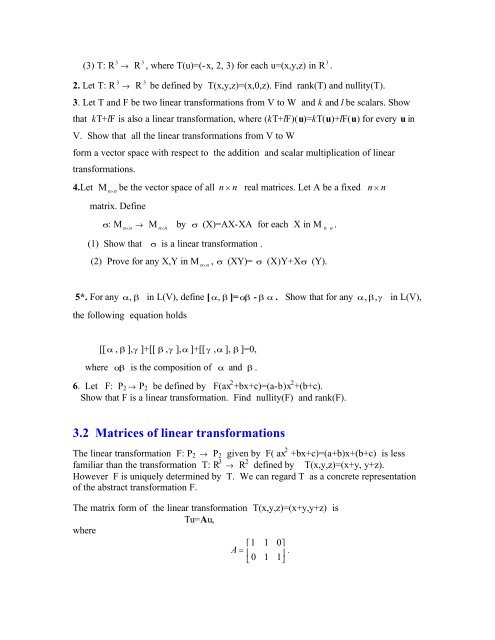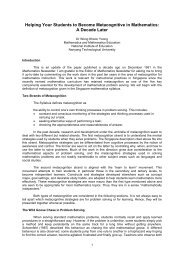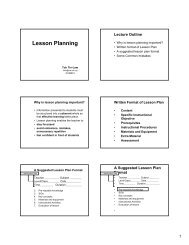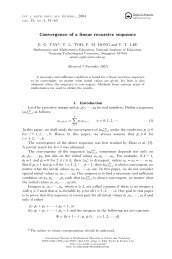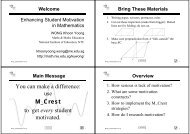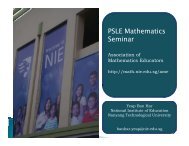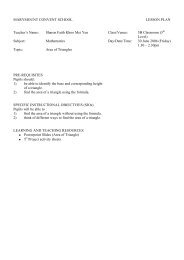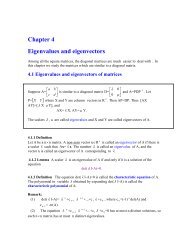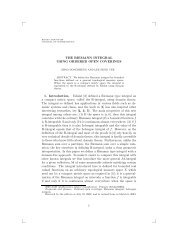Chapter 3 Linear transformations
Chapter 3 Linear transformations
Chapter 3 Linear transformations
Create successful ePaper yourself
Turn your PDF publications into a flip-book with our unique Google optimized e-Paper software.
(3) T: R 3 → R 3 , where T(u)=(-x, 2, 3) for each u=(x,y,z) in R 3 .2. Let T: R 3 → R 3 be defined by T(x,y,z)=(x,0,z). Find rank(T) and nullity(T).3. Let T and F be two linear <strong>transformations</strong> from V to W and k and l be scalars. Showthat kT+lF is also a linear transformation, where (kT+lF)(u)=kT(u)+lF(u) for every u inV. Show that all the linear <strong>transformations</strong> from V to Wform a vector space with respect to the addition and scalar multiplication of linear<strong>transformations</strong>.4.Let M n× nbe the vector space of all n × n real matrices. Let A be a fixed n × nmatrix. Defines: M n× n→ M n× nby s (X)=AX-XA for each X in M n n.(1) Show that s is a linear transformation .(2) Prove for any X,Y in M n× n, s (XY)= s (X)Y+Xs (Y).5*. For any a, b in L(V), define [ a, b ]=ab - b a . Show that for any a , b,g in L(V),the following equation holds[[a , b ],g ]+[[ b ,g ],a ]+[[g ,a ], b ]=0,where ab is the composition of a and b .6. Let F: P 2 → P 2 be defined by F(ax 2 +bx+c)=(a-b)x 2 +(b+c).Show that F is a linear transformation. Find nullity(F) and rank(F).3.2 Matrices of linear <strong>transformations</strong>The linear transformation F: P 2 → P 2 given by F( ax 2 +bx+c)=(a+b)x+(b+c) is lessfamiliar than the transformation T: R 3 → R 2 defined by T(x,y,z)=(x+y, y+z).However F is uniquely determined by T. We can regard T as a concrete representationof the abstract transformation F.The matrix form of the linear transformation T(x,y,z)=(x+y,y+z) isTu=Au,where1 1 0⎡ ⎤A = ⎢ ⎥ .⎣01 1⎦


